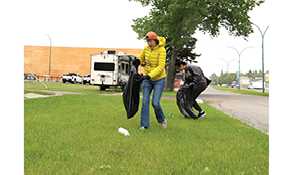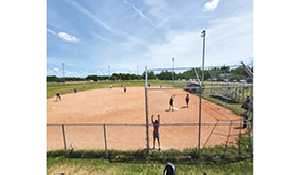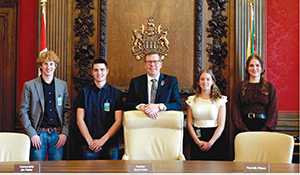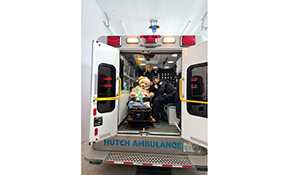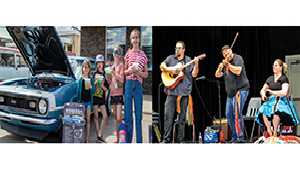Whitewood brings three resolutions to SUMA convention
April 21, 2025, 10:15 am
Ryan Kiedrowski, Local Journalism Initiative Reporter
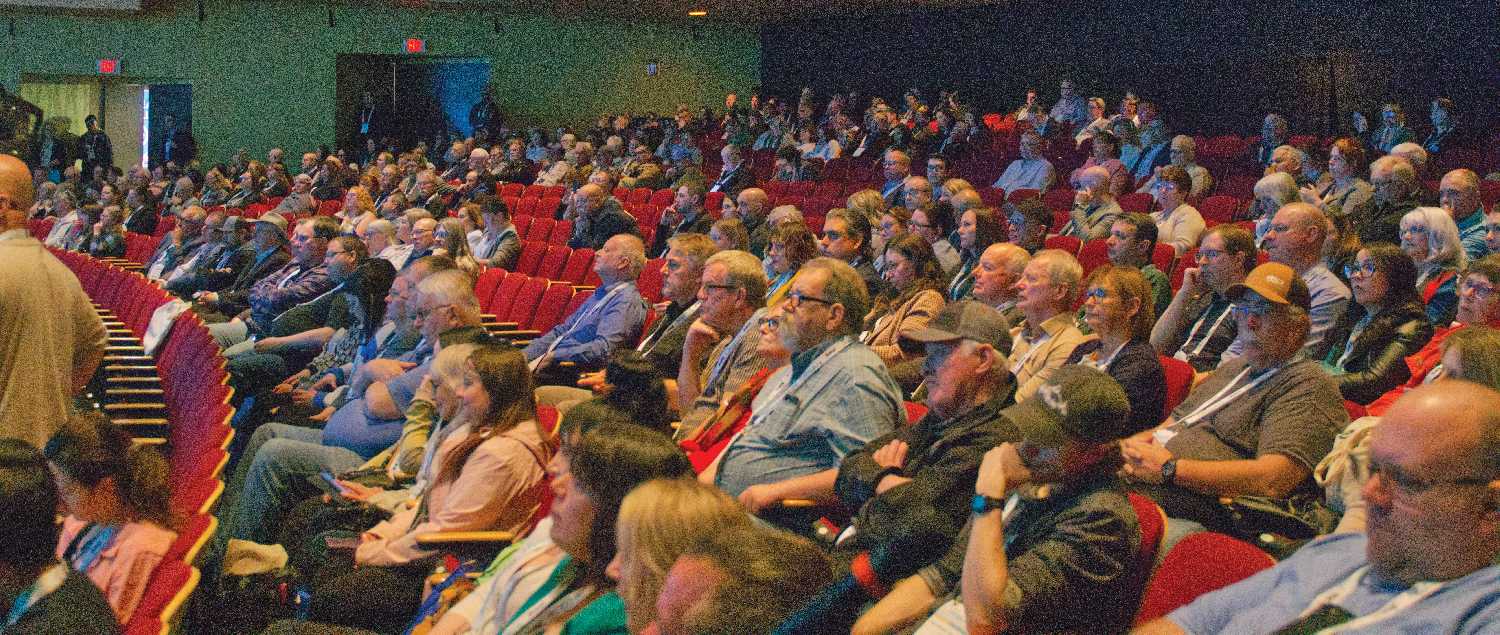

The Town of Whitewood brought a trio of resolutions forward to the Saskatchewan Urban Municipalities Association convention in Saskatoon last week.
First up was 2025-13, which sought to limit tax exemptions for municipal properties in neighboring communities. The provision itself was originally intended for municipal offices—especially those located in rural municipalities—that are often also located in neighboring municipalities.
While the trend for RMs to own multiple buildings in an urban municipality is increasing, the resolution noted a tax benefit for the RM that owns those buildings in question while taking up land and requiring services from the urban municipality as well.
Moosomin Mayor Murray Gray was opposed to the motion, raising the point that such an action might actually raise taxes for the urban municipality.
“Although I do sympathize with Whitewood and maybe some other communities that have RM shops in their community, the reciprocal taxes of the RM taxing us for our golf courses, and our lagoons, and our well sites for our water treatment plants would be far greater than what would be left in taxes saved the other way,” said Mayor Gray. “I’m strongly opposed to this, I would suggest that those communities maybe look at a grant in lieu of taxes if they’re in a deficit with that but as far as our community, it would cost us probably $100,000 in tax.”
Chris Ashfield, Mayor of Whitewood, sought support for the resolution as it would “at least legislate some sort of grant in lieu like we do with SaskPower, SaskEnergy.”
“We’ve run into situations now where we have multiple properties owned in our community by neighbouring RMs,” he said. “They were looking at a fairly substantial property that would have lost the town probably $30,000 to $50,000 on one property in a year. The loss to the town, which is half the size of Moosomin or a third of the size, is over $100,000 to us. Last year, in discussions with some of the communities at this convention we discovered that there were some municipalities that had up to six properties that were owned by RMs within the town because they’re wanting to access the services, and it’s taken away a lot of our commercial property and our available land, which is expensive to redevelop.”
When taken to a vote, 56 per cent were opposed to the resolution and 44 per cent were in favour.
A second resolution from Whitewood (2025-14) wanted to allow voting for non-resident business owners. While these people reside elsewhere, the significant tax dollars, support of local events and fundraisers ought to be recognized according to the bylaw. This also means residents who live in a community and own land in an RM could vote in both municipal elections.
As such, the resolution sought SUMA to advocate the provincial government to amend the Local Government Election Act, allowing business owners to pay their property tax to a municipality and vote in their elections.
André Lorrain, a councillor from the Town of Gravelbourg, noted he was in favour of the resolution, but also questioned the impact those voters might have.
“The one thing I’d like to see is more clarification in regards to that,” he said. “The concern is business owners who pay taxes to the property but don’t belong, not only in that region, but not even in the province, or maybe not even in the country, and I think the concern is how much influence they can still have in the voting process. I’d like to see some parameters put around it to tighten that up.”
Another voice exercising caution with the resolution was Pierceland Mayor Coral Dale, who wondered if those votes could upset the balance in a smaller centre.
“If you have a corporation, each one of those members of that corporation could vote, and it could overrule a small municipality,” she said. “Think carefully about this resolution.”
Caution eventually won out as the resolution was overwhelmingly defeated with 89.7 per cent of voters in opposition, and 10.3 per cent in favour.
One resolution from Whitewood that did see a swell of support was 2025-15, which dealt with the appointment of building officials.
“We’re finding quite a few times a year, the building inspectors are sending us new employees that they hire and we’re continually passing motions,” Whitewood Mayor Chris Ashfield said. “We don’t have any references for the people, we don’t know who they are, but we’re expected to pass a motion to hire these people. Yet, when we hire an accountant to audit our communities, we hire the accounting firm—we don’t hire each individual employee that’s going to be working on it. When we hire a contractor, we hire that contracting company not each individual. So we’re not sure why the building code has a different system where we have to approve each employee that’s working with our town that we have zero knowledge about.”
The resolution wanted SUMA to advocate the provincial Ministry of Government Relations to amend the Uniform Building and Accessibility Standards Act to allow appointments of qualified companies as building officials, putting the onus on companies to make sure their staff are suitably qualified for the position.
The resolution received 78.6 per cent of the popular vote, with 21.4 per cent opposed.
Other resolutions
There were 17 other resolutions that SUMA delegates voted on, taking an hour and 40 minutes to complete the process.
Funding for Dutch Elm Disease
The Town of Strasbourg brought forward 2025-01 which dealt with funding for Dutch Elm Disease. While the disease has been affecting Saskatchewan elm trees for the last four decades, a resurgence in recent years has made some places hot zones, specifically the Carrot River area, South Saskatchewan River, Souris River, and the Assiniboine Qu’Appelle watersheds.
Dutch Elm Disease programs can be quite costly for a community, and the resolution asked SUMA to seek funding from the province in terms of education, prevention, and removal of afflicted trees. A popular request, 88.3 per cent of delegates voted in favour of the resolution, with 11.7 opposed.
Assistance Addressing Dilapidated Buildings
The Town of Nipawin sought help in dealing with eyesore buildings in communities, explaining how dilapidated buildings threaten public safety, lower property values, and run down the appeal of those centres.
With financial and technical resources sometimes being challenges, the resolution was for SUMA to advocate the provincial government for help. This would include assessment, maintenance, demolition, or repurposing of the buildings in question, and help the municipalities to draw up regulations to deal with abandoned buildings.
The vast majority agreed, with the vote garnering 96.8 per cent in favour and 3.2 per cent opposed.
Additional Funding for Paratransit Vehicles
In an effort to keep up with rising costs, the City of Prince Albert proposed a resolution that would see SUMA ask the province to better align funding resources.
Currently, municipalities can apply for capital funding under the Transit Assistance for People with Disabilities Funding program for 75 per cent of a replacement vehicle, up to $55,000. Adjusting for current inflation, that cap rate equates to 30 per cent of a typical paratransit bus with municipalities left to pick up the tab.
The resolution sought to increase that cap to cover 75 per cent of the cost rather than a fixed dollar amount. The resolution passed with 89.3 per cent in favour and 10.7 per cent opposed.
PST on Construction to Fund Infrastructure Development
The Town of Maple Creek put forward an idea to see a Municipal Infrastructure Rehabilitation/Renewal Grant Program, funded from provincial sales tax. Both SUMA and the Saskatchewan Association of Rural Municipalities have tapped the province to provide PST relief when it comes to construction, however this resolution is asking for a straight yes or no answer. Another strong message from the delegates saw 83.6 per cent in favour and 16.4 per cent opposed.
Legislative Tax Sale Changes
The Town of Radisson would like to see the provincial government take a note from British Columbia’s playbook, altering what the resolution called an ‘administratively onerous’ Tax Enforcement Act. Three-quarters of those assembled agreed, with 25 per cent opposed in the vote.
Emergency Shelter and Low-Barrier Supportive Housing Funding
The City of Moose Jaw proposed SUMA advocate to the provincial government for a wider net when it comes to helping homeless people in Saskatchewan. Pointing to the $40.2 million Provincial Approach to Homelessness program that funded new supportive housing spaces in Regina and Saskatoon, the resolution asks that all municipalities in Saskatchewan see the same level of funding. That vote also passed with 73.1 per cent in favour and 26.9 opposed.
Sustainable Urban Development
The Town of White City introduced a resolution asking for an amendment to the Planning and Development Act to better assist communities as they grow. The five-point resolution asks to clearly define and protect designated urban growth boundaries; allow urban municipalities to set and regulate development zones within a defined radius of their boundaries; mandate regional collaborative planning between urban and rural municipalities in order to align development priorities; make sure that growth projections are equitable, legally binding, and reflect the long-term needs of urban centres; and support a growth planning horizon of 25 to 35 years. The resolution received 81.2 per cent of the popular vote, with 18.8 per cent opposed.
Additional Funding for Police Officers
In a resolution seeking fully-funded police officers that are shared throughout the province, the City of Prince Albert would like to see provincial budget commitments further assist municipalities. The resolution noted how municipalities are responsible for the added costs of hiring and onboarding of new officers, while also paying for essentials such as equipment, benefits, clothing and supplies. Given budgetary constraints, the added costs eventually come down to taxpayers to bear. Ultimately, the resolution sought SUMA to advocate the province to cover these work-related expenses. Just over 70 per cent of delegates agreed, with 29.6 opposed to the resolution.
Funding for Mental Health and Social Services
Introduced by the City of Estevan, this resolution noted how municipalities are seeing more responsibility to provide health and social services, but not the adequate amount of funding to do so. With social issues including homelessness, addiction, and crime increasing, SUMA ought to ask the provincial government for not only an increase to that funding, but ongoing meetings with municipalities around deployment of those services in communities. The vast majority—89.9 per cent—voted in favour of the resolution, with 10.1 per cent opposed.
Funding for Open-Air Skating Rinks
With provincial and federal dollars funding indoor arenas, the Town of Osler believes outdoor ice surfaces ought to see some financial help, too. In many places, getting ice time at the rink is tricky, and unstructured shinny sessions on an outdoor ice surface will increase physical activity for people during the long winter months. In that spirit, the ask for SUMA to approach the province for more grant funding towards open-air skating rinks was raised. This vote saw 64.2 per cent in favour and 35.8 per cent opposed.
Level 1 and 2 Care Homes in Small Urban and Remote Municipalities
Citing the need for more Level 1 and 2 care facilities in small town Saskatchewan, plus the anticipated rise in residents aged 55 and over, the Town of Coronach introduced a resolution seeking more provincial dollars to fund such places. A continuing issue noted was how seniors are faced with leaving the community they lived in for many years in order to seek care facilities that meet their needs in larger centres. Just over 85 per cent of delegates agreed with the idea, with 14.6 opposed.
Re-establish Regional Economic Development Authorities and Support Economic Development Officers in Saskatchewan
This joint resolution from the Town of Coronach and the SUMA Board of Directors sought a return to Regional Economic Development Authorities, also looking for the support of SARM and the Saskatchewan Economic Development Alliance for added support in approaching the provincial government to support the plan.
Re-establishing REDAs would allow municipalities to develop regional investment attraction strategies that promote business expansion and job creation, build collaboration between municipalities, and build small urban and remote municipalities in hiring EDOs and Community Development Officers to lead the initiatives.
Smaller development corporations first came on the scene in Saskatchewan in the 1980s before 28 formal REDAs were formed in 1992. In 2008, funding for those organizations was re-allocated to 13 economic regions—or ‘enterprise regions’—but by 2012, the program was dissolved and funding for regional economic development was ended. A total of 84.8 per cent of delegates voted in favour of seeing a return to REDAs, with 15.2 per cent opposed.
Expanding and Sustaining Home Supports for Seniors
The SUMA Board would like to see more supports for seniors, working with the Saskatchewan Seniors Mechanism to advocate the Government of Saskatchewan on key points of expanded home support programs, financial assistance for home modifications, personal care services, and mental health resources. The anticipated result is to improve quality of life for seniors, reduce pressures on the healthcare system, and help municipalities build age-friendly communities. Almost 95 per cent of delegates agreed, with 5.1 per cent opposed in the vote.
Climate Change Adaptation Support for Municipalities
Perhaps the closest vote of all resolutions presented, this item proposed from the SUMA Board promoted asking the provincial Ministry of Environment to better deal with issues of climate-related challenges. Taking a page from the Alberta Climate Change Action Centre, the SUMA Board noted municipalities need climate adaptation strategies, better risk assessment tools, and more funding dollars to bring in sustainable solutions.
The resolution sought financial support for SUMA to create a Municipal Eco-Action Centre as a resource for municipalities to access training, funding assistance, and guidance on climate adaptation. Another point was to establish a fund to help local governments in the province in the assessment, adaptation, and upgrading infrastructure to withstand more extreme weather events. In a narrow vote, 50.3 per cent of delegates were in favour of the idea, while 49.7 per cent were opposed (148 to 146 ballots cast).
Enhancing Waste Diversion and Municipal Funding
In a reaction to provincial waste reduction targets of 30 per cent by 2030 and 50 per cent a decade later, municipalities are finding it challenging to meet the mark. In 2022, the provincial waste diversion rate was 17.9 per cent—below the national average of 27 per cent.
In order to help reach those targets, the SUMA Board resolved that the Ministry of Environment be approached to expand the Extended Producer Responsibility program to include additional materials; establish dedicated funding programs that will ultimately cut down on landfill dependency; enhancing municipal collaboration in the Solid Waste Management Strategy; and develop a province-wide waste diversion tracking and benchmark framework. Almost 90 per cent of delegates agreed, with 10.1 per cent opposed.
Sustainable Infrastructure Funding for Municipalities
Roads, water, and public buildings are important items in a municipality, and the SUMA Board would like to see more help from provincial and federal resources. This resolution sought a dedicated, long-term infrastructure funding program with predictable dollars, expanding existing infrastructure programs to include climate resilience programs, streamline the infrastructure grant application process, and prioritize municipal-led projects. Another vote strongly in favour with 93.2 per cent agreeing and 6.8 per cent opposed.
Communities in Transition Fund
A last-minute addition to the list of resolutions involved an important discussion on the Communities in Transition fund. These dollars are set aside for RMs to access when they absorb a village into their municipality, providing 10 years of the former municipality’s revenue share through a grant process, on average around $300,000. Urban municipalities pay 28 per cent, and the ‘urgent and emergent’ resolution from the SUMA Board pointed out that RM populations are 16 per cent of the provincial total. RMs also get funding through sources such as the Rural Integrated Roads for Growth Program, and ‘preferential treatment’ in potash tax revenues.
In essence, SUMA opposes any changes to the CIT fund, a response to SARM’s recent resolution calling on the government to mandate that urban municipalities contribute significantly to the capital grant portion of the CIT fund.
“The purpose of the CIT is to assist rural municipalities in transitioning villages that can no longer function on their own into the RMs,” said Kipling Mayor and SUMA Board Director for the Southeast Region, Pat Jackson. “It is not intended as money to be used for various other SARM things.”
Mayor Jackson noted that urban municipalities already pay the lion’s share of money spent on recreation facilities and services used by residents. She added that any leftover money ought to be sufficient to fund village transitions, pointing to the $7.2 million in remaining funds from a period of 2009 to 2023.
When put to a vote, delegates were overwhelmingly in favour with 90 per cent in agreement and 10 per cent opposed.
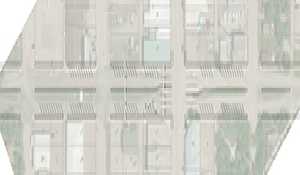
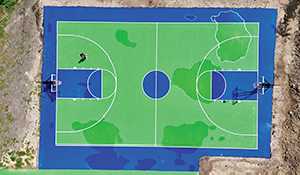




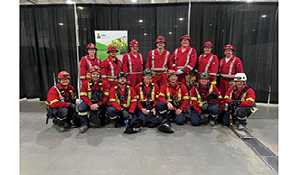
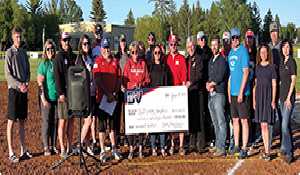




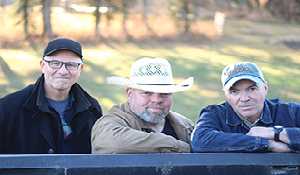

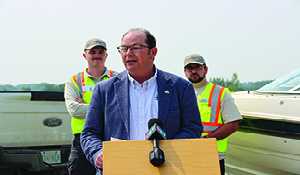
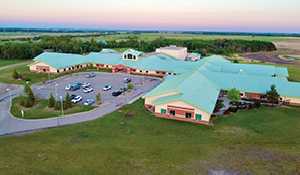


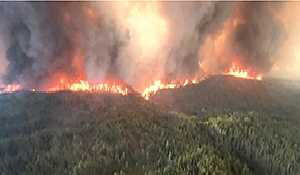
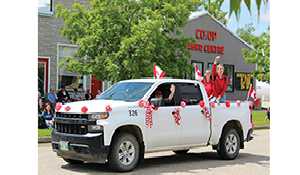
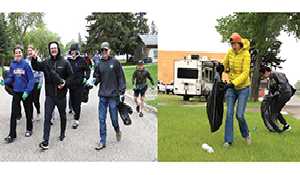
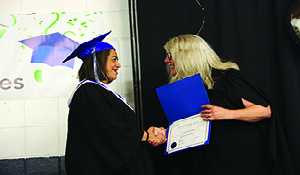

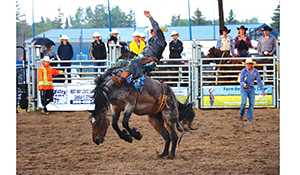



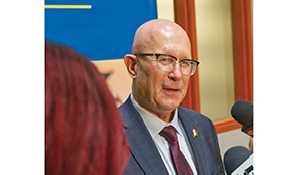
SM.jpg)
